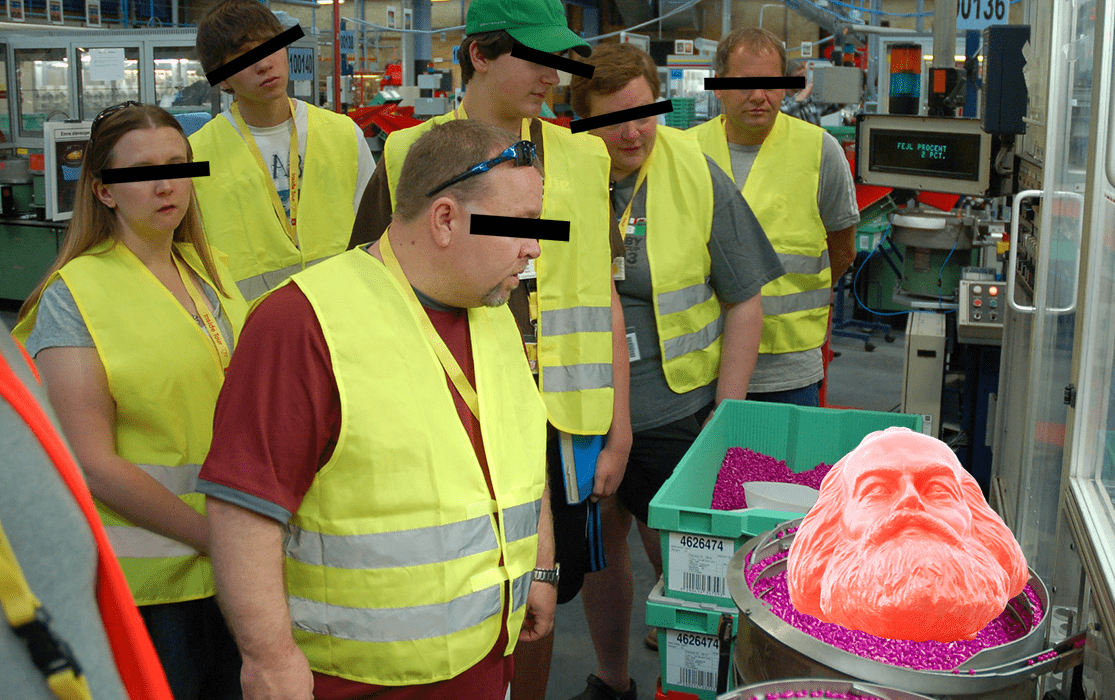Imagine this: you’re a young person just out of high school on your way to college to earn a computer science degree. You’ve been inspired by Bernie Sanders and socialism. A friend convinced you to join the youth wing of DSA. At some point, a working group comrade brings up an article arguing that committed socialists should become teachers. Your fellow DSA members agree that it’s a sound strategy and a noble endeavor. Plus, there’s plenty of literature in eminent left publications signaling its necessity.
A few years in, and you haven’t had much success convincing any of your fellow teachers to become socialists. In fact, it turns out that most of them don’t feel strongly about politics in either direction, left or right. But you trudge on, ceaselessly, against the bitter wind of political economy—at least, until the day your boss finds out.
This fictional account is inert and depressing, but it’s only as bad as the fact that this is exactly what the left’s most popular labor organizing strategy, “Rank and File,” has to offer.
Rank and File revolves around seeding devoted socialists into targeted union industries or workplaces, in order to clandestinely radicalize a minority of its constituents. This militant group is then meant to go on and lead the rest of its fellow workers to undertake more robust and aggressive collective actions, with the ultimate goal of producing a mass class consciousness among all workers—a logical leap that is unsurprisingly short on details.
Inciting idealistic people along this path today is more irresponsible than it ever has been. In an atomized world, fringed by “at will” work laws and framed by potential catastrophes like Covid-19 that can send 40 million workers into unemployment and competition, the personal cost of fighting your employer (and losing your job) is far more dangerous than most care to realize. There is no friendly territory. Even within the most progressive-sounding businesses, efforts to unionize are easily defeated.
Broad terms like “workplace” and “industries” are used in Rank and File literature, yet only the teaching profession is ever specifically cited.
To make matters worse, unions—the central battlefield of the Rank and File strategy—have almost disappeared. As of 2019, The U.S. Bureau of Labor Statistics reports union membership in the U.S. at a measly 10.3% of the workforce. As recently as 1983—the first year the Bureau has comparable data—the percentage was 20.1%. For unions, the trend line portends an approaching endpoint. If labor’s signature battleground is unions, then socialists and the broader left have lost badly. Private sector union membership is all but gone. Public sector unions represent the last battalion, and even they have been weakened beyond recognition. The probability that they too will soon fall is high, likely achieved through continued neoliberal electoral dominance. A measure like Taft Hartley 2.0 lies dangerously on the horizon.
Not only are there few unions left—finding volunteers for such an “insurgency” is nearly impossible. Rank and File strategy assumes a fantasy socialist. This socialist must be highly capable—possessing privilege, education, leadership skills, and charisma—in order to scale the heights of elite left careerism, and must also be willing to deny themselves a decent life in service of an uncertain, years-long class struggle. This is a minority of a minority of a minority of a minority.
As leading labor theorist Kim Moody writes in Jacobin that, “our experience is that it often takes people trained in organization, with a commitment and perspective of worker organization.” Realistically, these individuals won’t take cashier jobs at Walmart for $7.25/hr. More likely, they will work on political campaigns and for well-funded NGO’s. The sort of mid-way career paths that provide any semblance of a livable wage while also placing someone into a direct relationship with the lowest income earners are gone. Corporations are keen to eliminate as many of those jobs as possible. They know who the trouble makers are—why bother fighting them when you can just refuse to hire them in the first place?
Proponents of Rank and File employ an effective rhetorical trick to convince well-intentioned leftists that their strategy uses a universalist approach. Despite their use of broad terms like “workplace,” and “industries,” available literature on the subject only ever cites one field: the teaching profession. Why? Because teaching presents a convenient mirage—it provides a living wage, has an existing union base, and possesses the aesthetic patina of “working class.” However, to focus on teaching disregards an inconvenient truth: the great mass of workers aren’t teachers—they’re all in the retail and service sector.
According to federal projections for 2020 there are 3.2 million full-time teachers employed in the United States. That seems like a large number, but if we put it into context, its significance falls into perspective. Walmart employs 1.5 million people, most of whom are low income and non-management. They also represent just one employer within the larger retail/service sector. There are an estimated 3.6 million cashiers in the U.S. There are 3.5 million truck drivers in the U.S. There are 13.1 million fast food workers in the U.S.
Even within that last bastion of union membership—the public sector—teachers still represent only a minority. The U.S Bureau of Labor Statistics reports that highest unionization rates are found in “protective service occupations (33.8 percent).” In other words, the police.
That’s right. For all the discussion within the left about how race and class intersect—that it’s an eminent pool of opportunity and our efforts should be directed there—there is a deafening silence about the fact that the final bulwark of collective bargaining is centered within a profession almost universally despised by leftists. It’s not an elephant in the room; it’s an entire circus. If Rank and File were a serious project and not a discursive exercise, then its proponents would be talking seriously about radicalizing police unions.
Kim Moody, again: “Socialists can build transitional organizations and struggles that help to raise the class-consciousness of activist workers, in order to enlarge the layer of workers in the class who are open to socialist ideas.” Really? And how? To ask for details is taboo. Have faith and do the work, they’ll tell you. And when the strategy inevitably fails, these same thinkers will repeat themselves with lengthy panegyrics about worker movements of yore, and how they apply to our era, concluding with herculean efforts that rationalize failures as strategic reformulations.
The truth is that small-scale organizing like Rank and File not the holistic, transformative approach that workers need. The National Labor Relations Act is federal legislation; it’s undoubtedly the most important piece of labor law in the United States, and it was passed through the strength of a plurality of voters (most of whom weren’t socialists!)
To use another example, the most prominent and successful labor action of the last decade is the fight to raise the federal minimum wage to $15/hr. The #Fightfor15 campaign has produced results, preemptive of becoming federal legislation. Amazon and Target have already acquiesced to the demand. In 2016 Bernie Sanders single handedly elevated the idea into the national consciousness with his endorsement. The effect was so successful that nearly every candidate in the 2020 Democratic primary gave at least verbal support to the idea.
Yet #Fightfor15 wasn’t brought to national prominence through Rank and File strategy, “salting,” or any other sort of direct action. The #Fightfor15 campaign makes no mention of unions or even socialists. It’s an easily digestible notion. It’s readily marketable. It also sidesteps cumbersome neoliberal legislation, byzantine union processes, and the unfortunate limitations of the aforementioned NLRA. All that remains for victory on the issue is a touch of electoral success. The crucial process is mass politics doing the work.
Rank and File may have been a somewhat successful strategy in the past, but modern socioeconomic conditions require something else. It is a dangerous new world which asks us to admit to ourselves that, while corporations are creative and innovative, the “left” isn’t. Old strategies are promoted because we live in a political vacuum of viable options. But the absence of alternate approaches should not be taken as an argument in favor of Rank and File. We have lost the battle. It’s not nihilistic to admit we don’t have a clear idea of where to go from here—it’s the first step.









